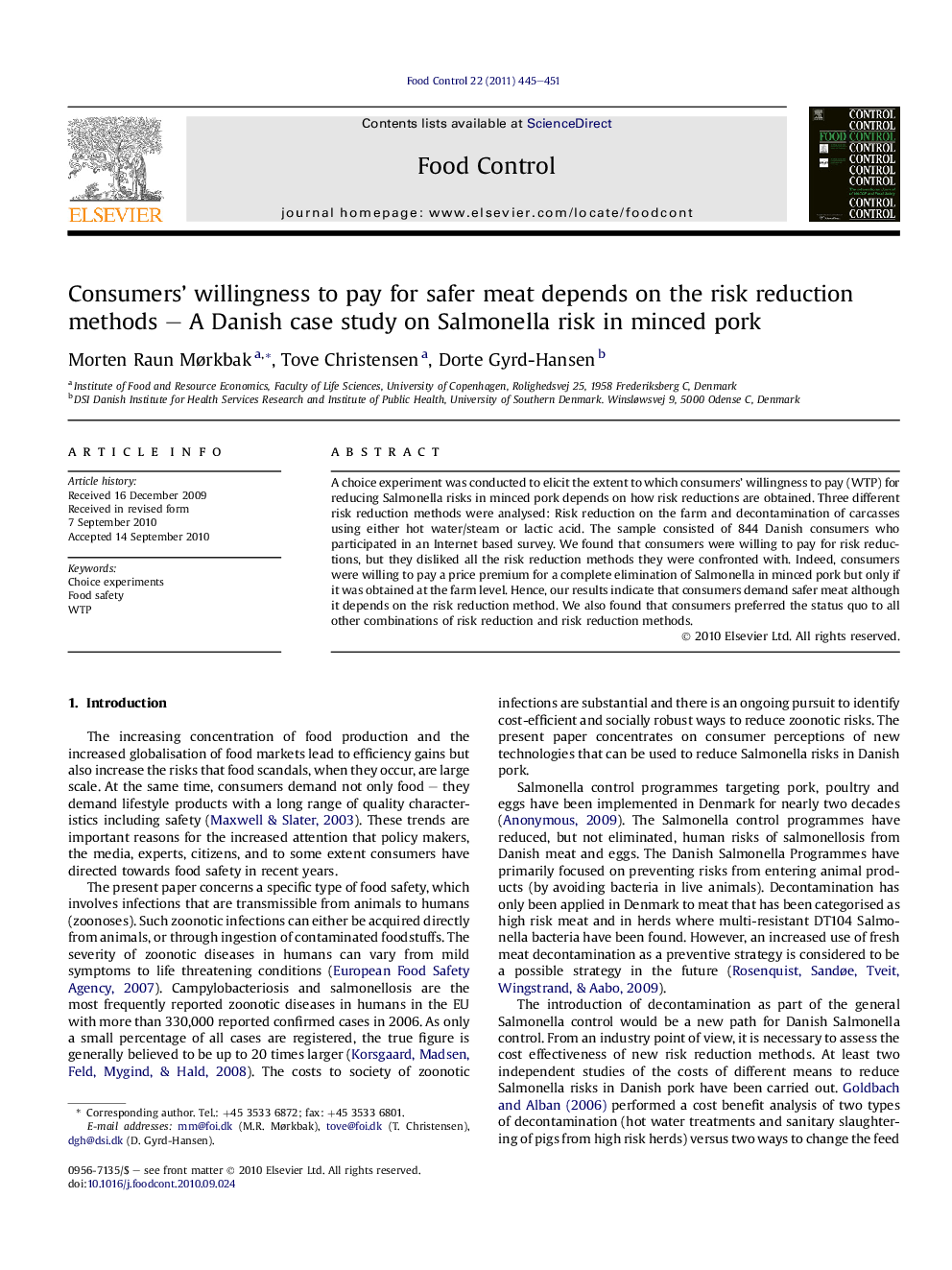| Article ID | Journal | Published Year | Pages | File Type |
|---|---|---|---|---|
| 4559677 | Food Control | 2011 | 7 Pages |
A choice experiment was conducted to elicit the extent to which consumers’ willingness to pay (WTP) for reducing Salmonella risks in minced pork depends on how risk reductions are obtained. Three different risk reduction methods were analysed: Risk reduction on the farm and decontamination of carcasses using either hot water/steam or lactic acid. The sample consisted of 844 Danish consumers who participated in an Internet based survey. We found that consumers were willing to pay for risk reductions, but they disliked all the risk reduction methods they were confronted with. Indeed, consumers were willing to pay a price premium for a complete elimination of Salmonella in minced pork but only if it was obtained at the farm level. Hence, our results indicate that consumers demand safer meat although it depends on the risk reduction method. We also found that consumers preferred the status quo to all other combinations of risk reduction and risk reduction methods.
